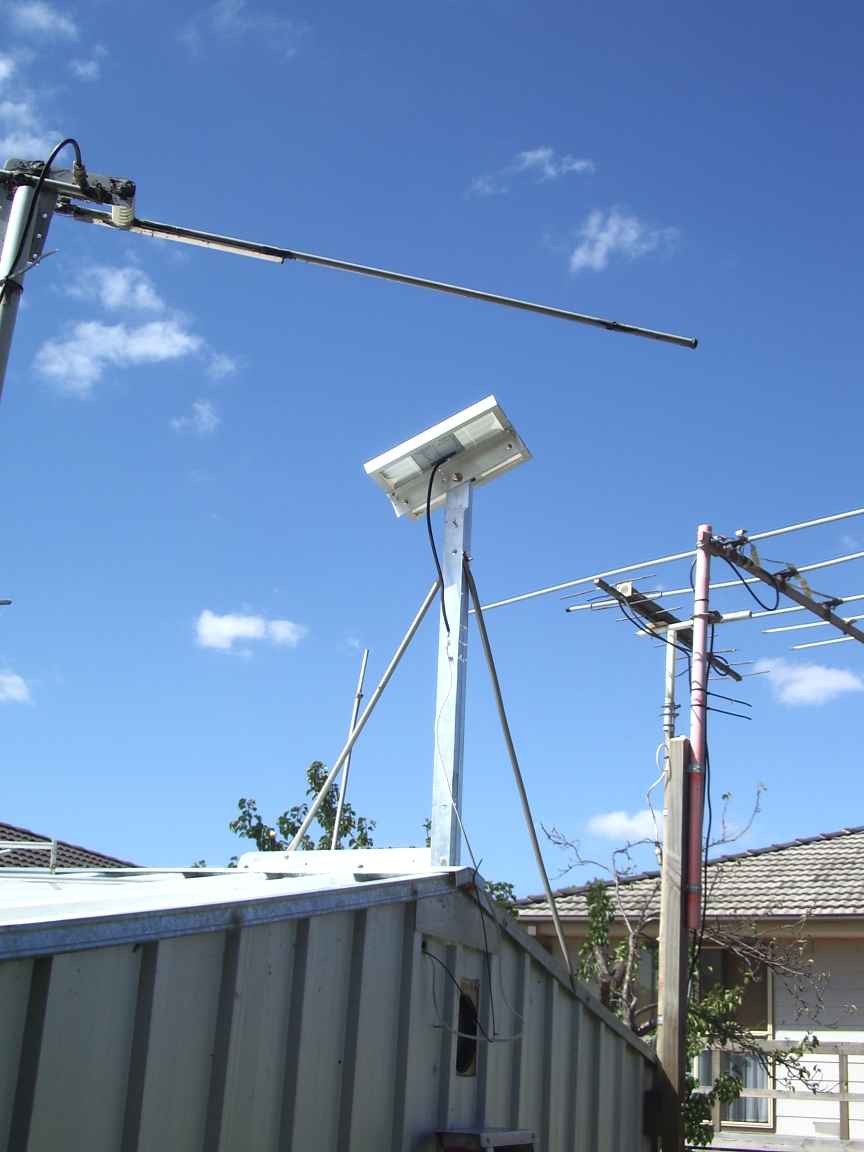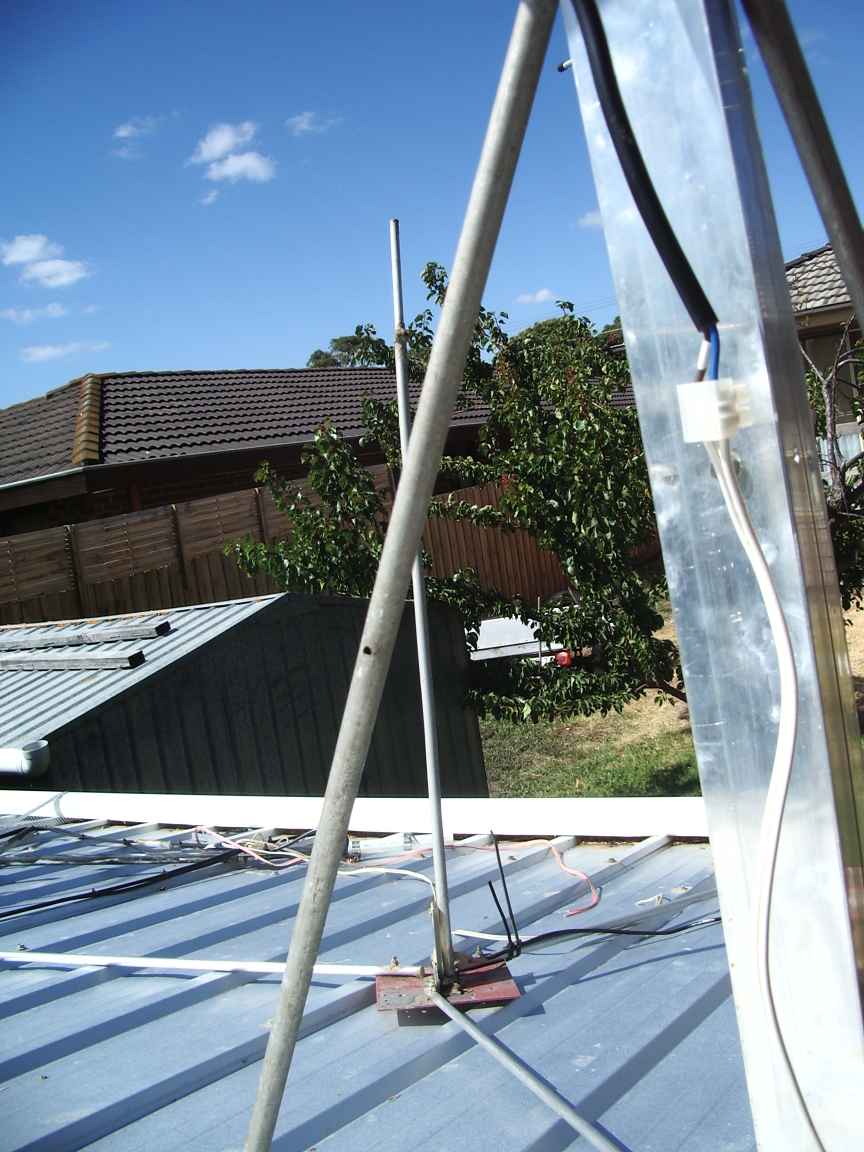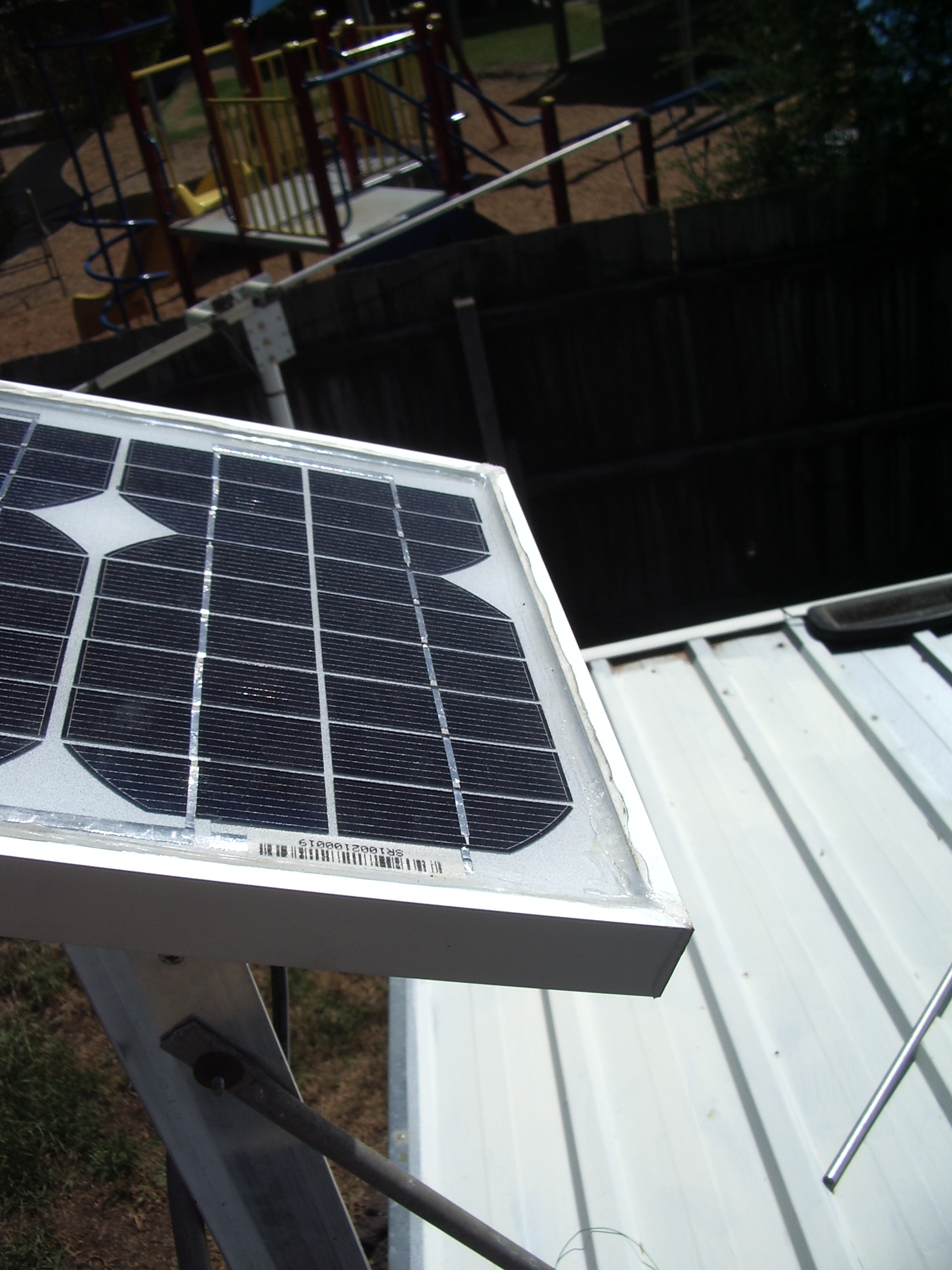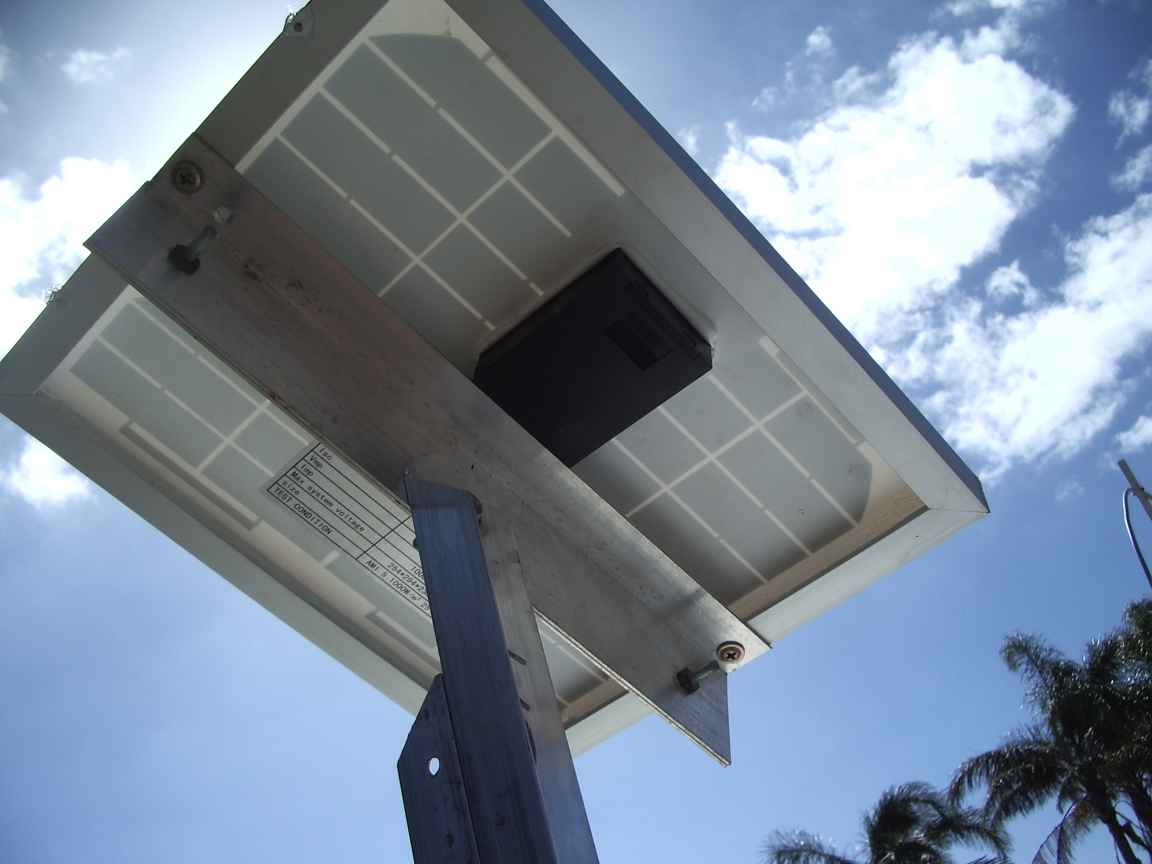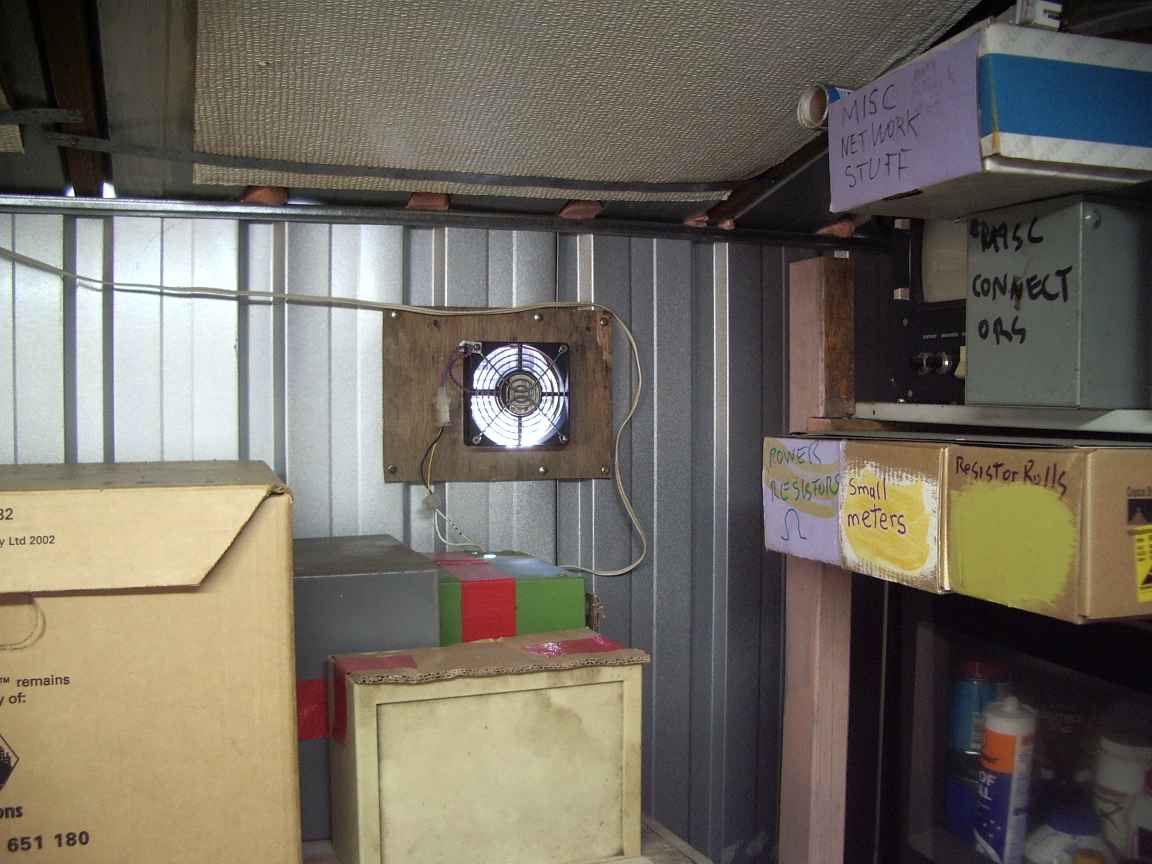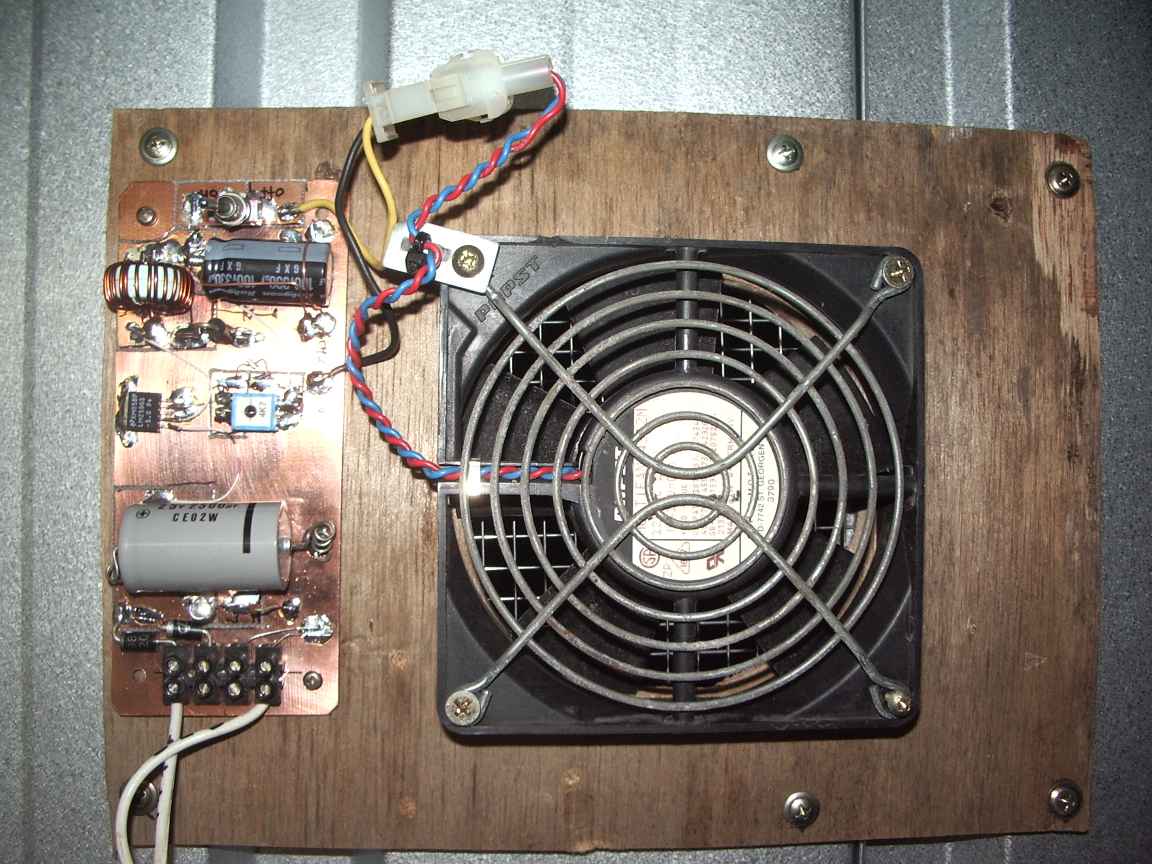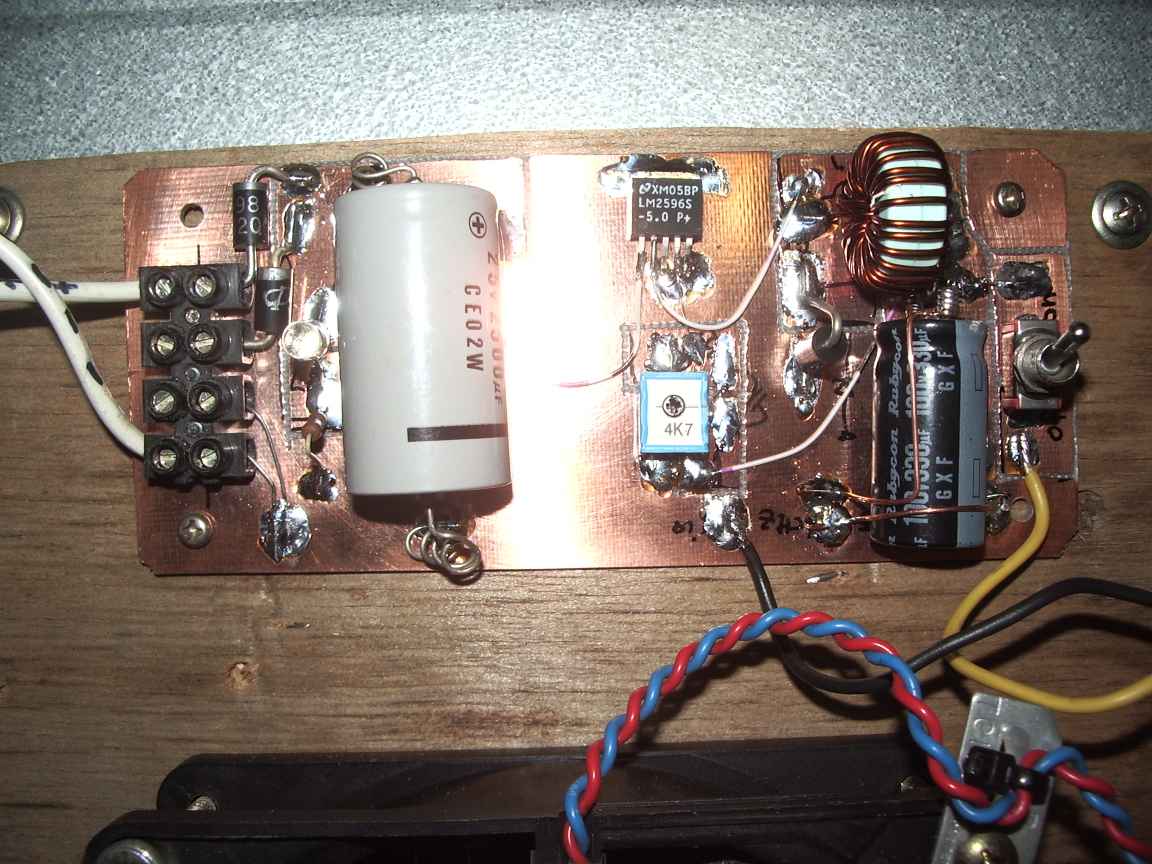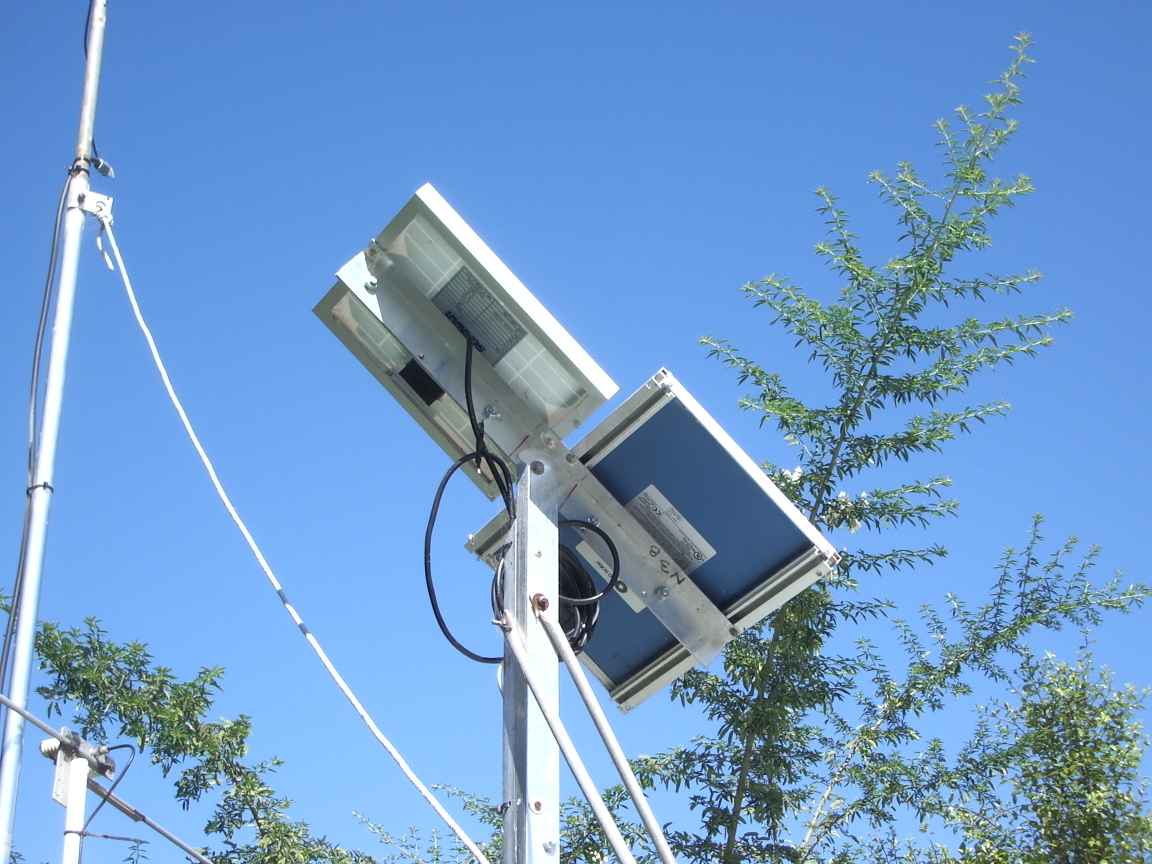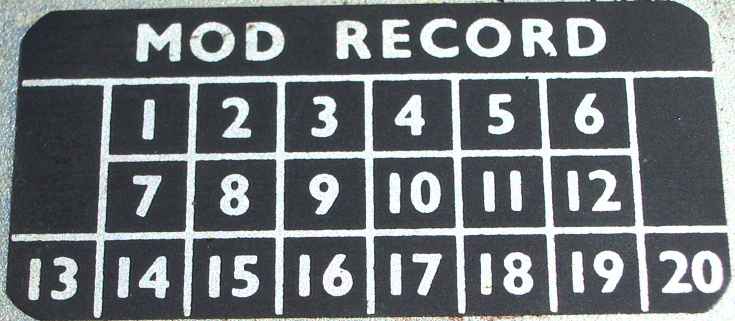The
lower cell is a BP Solar 10W array. It was quite expensive when
purchased some 6 years ago. I am told it did a good job installed
on a tiled roof facing north in Australia's withering summer heat.
Here are some interesting observations on cell aging. The
cells do age and degrade after prolonged exposure to the elements. This
class of service is murderous on electronics for it gets all of the
enemies of electrical systems. High temperature under load, rapid deep
cycling of temperature, condensation at night and full rainfall
exposure. After six years of this "normal" abuse the cell power
delivery has fallen about 70% of what would have been its factory fresh
output. Under the same conditions this larger cell array produces
only a little more then the new 5W cell. A measurement of its open
circuit voltage shows that a couple of cells in the array have short
circuited internally. This does not hurt the array significantly. There
was some evidence of water ingress, this is caused by moisture laden
air being pumped into the array by diurnal pumping...normal changes in
atmospheric pressure. I added yet more sillicone sealing to
extend its life in my service.
The
outputs of cell arrays with the equivalent open circuit voltage can be
directly paralleled. The current sharing is done by the inherent high
internal resistance of the cell arrays. The cells could also be
connected in series for a higher terminal voltage, however, due to
their different capacities would have resulted in an irregular volt-amp
curve and significant I2R loss in the smaller cell array.
My advice then, for installers of larger cell arrays:
Mount
the array offset from roof tiles. Tiles are good thermal insulators.
There should be free air circulation behind the cells because they will
heat up to punishing temperatures and this must decrease their service
life. There should be no shadow at all on the cell array, except
when the sun is low on the horizon and it does not matter then. Modern
cells are surprisingly insensitive to the position of the sun, but try
to position the array so that it directly faces the winter midday sun
. Then the summer sun angle looks after itself ! Go mad with glazing
grade silicon sealant, do not let water pool on the bottom
glass-aluminum lip, diurnal pumping will force moisture ingress. Add
extra sealant on the bottom lip. From what I have seen so far, I
am somewhat skeptical that the typically constructed cell arrays can
deliver their rated watt-hour output over their rated life. There
is not enough rear thermal ventilation or moisture ingress mitigation
to satisfy me. Moisture ingress resulting in inevitable
electrolytic decay will significantly shorten the working life of the
arrays.
|
